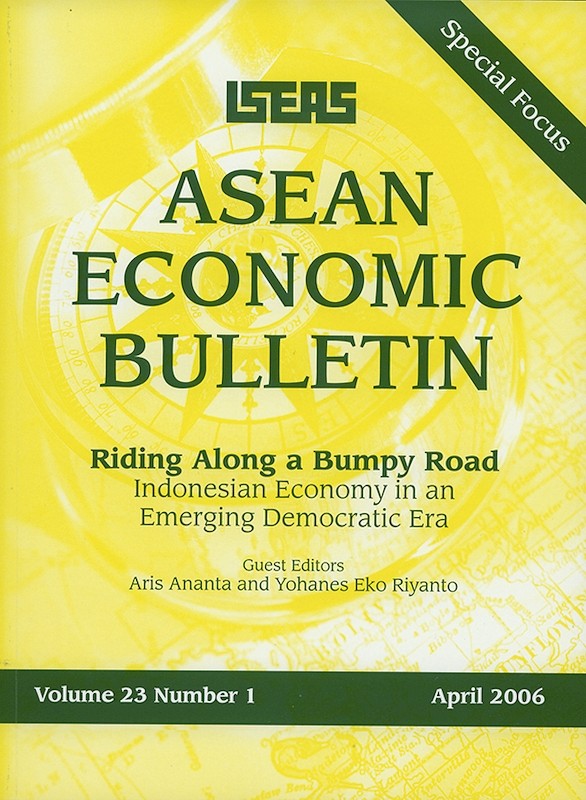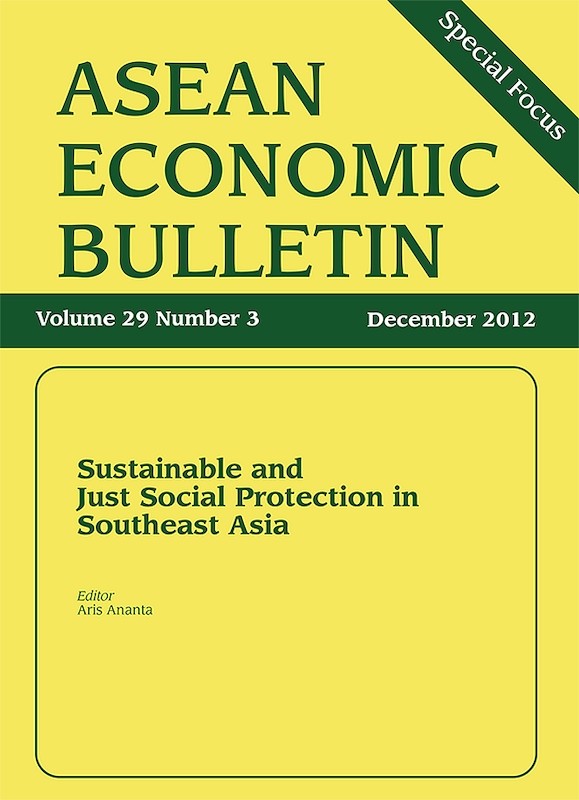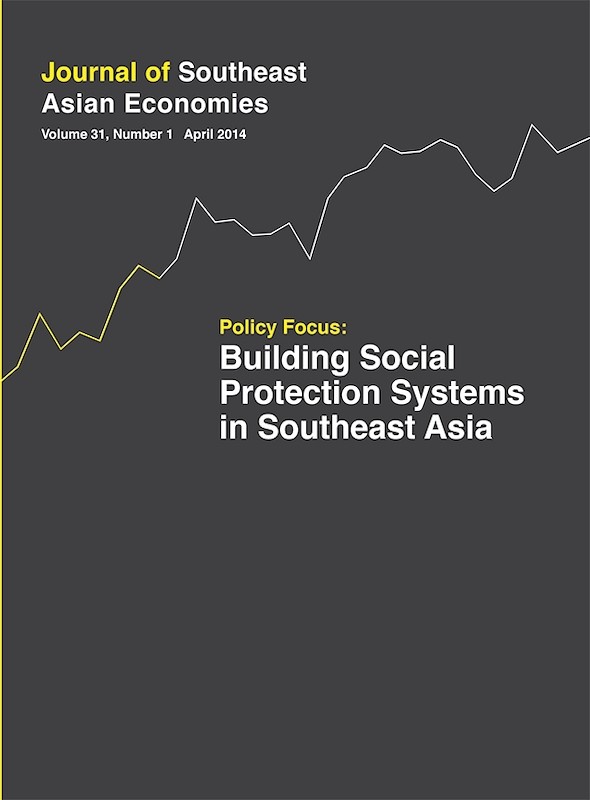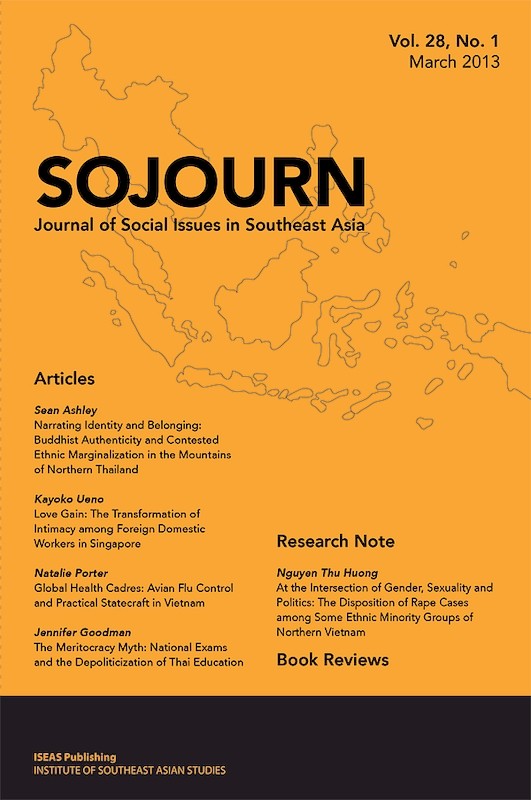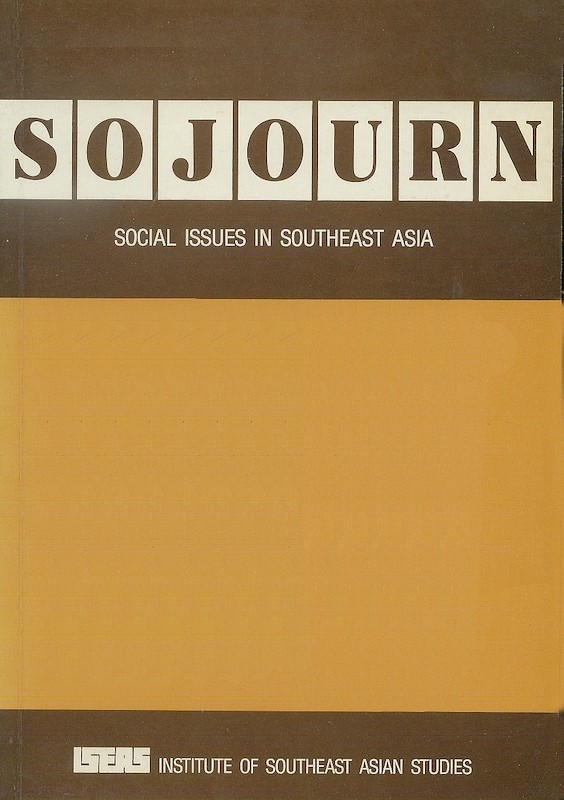ASEAN Economic Bulletin Vol. 16/3 (Dec 1999). Special Focus on "Social Sectors in Southeast Asia: Role of the State"

Date of publication:
December 1999
Number of pages:
122
Code:
AE16/3
Contents
-
Preliminary pages
-
Education and Economic Development in Southeast Asia: Myths and Realities, by Anne Booth, author see abstractThe author refutes the arguments by many others including the World Bank that heavy investments in education have led to equitable growth in several fast-growing economies of Southeast Asia since the 1960s. The author does not think that the governments of these countries have been especially astute at planning educational development in order to meet the demands of the fast-changing labour market. This is because in several cases it is clear that educational and skills bottlenecks have forced governments into relying on expatriate labour, and in some cases retarded economic growth.
-
Human Resource Development in Malaysia: A Study of the Government's Role, by Norrizan Razali, author see abstractSince independence, the Malaysian Government has focused on social development policies to improve the standard of living, in particular in the areas of health and education. With recent liberalization and privatization policies, the private sector is now encouraged to play a more prominent role in the provision of curative health care services, as well as the provision of tertiary education through private universities and colleges. This article traces the progress and success of the policies, and looks at some of the issues and problems that need to be addressed in light of privatization and also the effect of the recent economic crisis.
-
Health and Health Policy in Singapore, by Mohan Singh, author see abstractThis article examines how good health is achieved through the development of public policy on health care. It examines the attainment of health through a detailed analysis of mortality including death rates, life expectancy at birth, and cause and sex specific death rates and thereby the development of health care policy. The key findings are that Singapore has attained good health for all Singaporeans with the development of a comprehensive health care plan that focuses on individual stake-holding in health and keeping public health expenditure at a low level. The article also raises a few concerns such as unlikely high mortality level due to respiratory diseases and motor vehicle accidents as compared to other low mortality countries.
-
Social Safety Net Policies in Indonesia: Objectives and Shortcomings, by Aris Ananta, Reza Yamora Siregar, authors see abstractWhen the economic crisis hit Indonesia in 1998, concerns over its social impacts were high. As a response, the government within a relatively brief period formulated its social safety net policies. This article evaluates the policies from several key broad aspects such as targets and objectives, implementation, and sustainability. The findings suggest that weak economic indicators to measure the social impacts of the crisis had seriously undermined the effectiveness of the policies. In addition, poor implementation of the programmes often reflected weak administrative capabilities of the government. Unless the impediments are addressed, the programmes will remain marginalized.
-
Social Development in Thailand: Past, Present and Future Roles of the Public Sector, by Waranya Teokul, author see abstractThe public sector has played a dominant role in Thailand's social development, using the eight national development plans as guiding principles for setting priorities and resource allocation. Each of the development plans has conceptually evolved over time: from expansion of basic facilities, integrating social policy in national development, mobilizing people participation in social development, and then, human and social development of the people. The public sector also accordingly shifted its role from being the leading actor in the provision of social services for the people, to minimize its role and become the facilitator of human and social development of the people. It is important to note that NGOs and CBOs have also played a pivotal role in the development process. Though the country faced the challenge of the 1997 economic crisis, and saw rapid change as a result of globalization, the situation helped re-enforce and justify the current concept of encouraging people participation in development. The country has thus undertaken major reform programmes, in order to comply with the Constitution of B.E.2540 (1997), guaranteeing rights to health, education, social protection, and a social safety net.
-
The State and the Social Sector in Vietnam: Reforms and Challenges for Vietnam, by Quan Xuan Dinh, author see abstractThe doi moi (renovation policy) that Vietnam adopted in the late 1980s has led to high growth and more openness in the economy. However, the economic progress has not resulted in similar improvements in the social sector. Under the old central planning system, social services were free and the state was the sole provider of services. Under doi moi, the role of the government changed. Private providers in health and education were selectively allowed to operate through a policy called "xa hoi hoa" or socialization. This "socialization" policy was designed to compensate for the lack of public resources. During the 1987-97 period, secondary and tertiary education received an increasing proportion of public funding at the expense of primary education, and contributions from users and parents increased markedly. In the health sector, only a small fraction of the health budget is allocated to the commune health system, which serves 80 per cent of the population. The pension and social relief expenditure in the budget concentrated on pensions for public servants, war invalids and martyr families. The impact of this policy on the social sectors is mixed.
-
Social Sector Development in Myanmar: The Role of the State, by Khin Maung Nyo, Myat Thein, authors see abstractThe current policy of the Government of Myanmar emphasizes the role of the state in the social sector. On the other hand, the government announced its commitment to promote private sector development and less government intervention in the market. Although expenditure in the social sector is increasing in absolute terms, it accounts for less than one per cent of GDP. This may be because the Minister for Health and the Minister for Education are usually the least powerful among the ministers and, therefore, are in no position to fight for a bigger share of budgetary expenditure. Also, domestic policy generally tends to favour physical infrastructure over social infrastructure. While the need for physical infrastructure cannot be denied, the budget allocation for it by far outstrips that for the social sector. It is suggested that the neglect of the social sectors will cost the country dearly in the near future.


